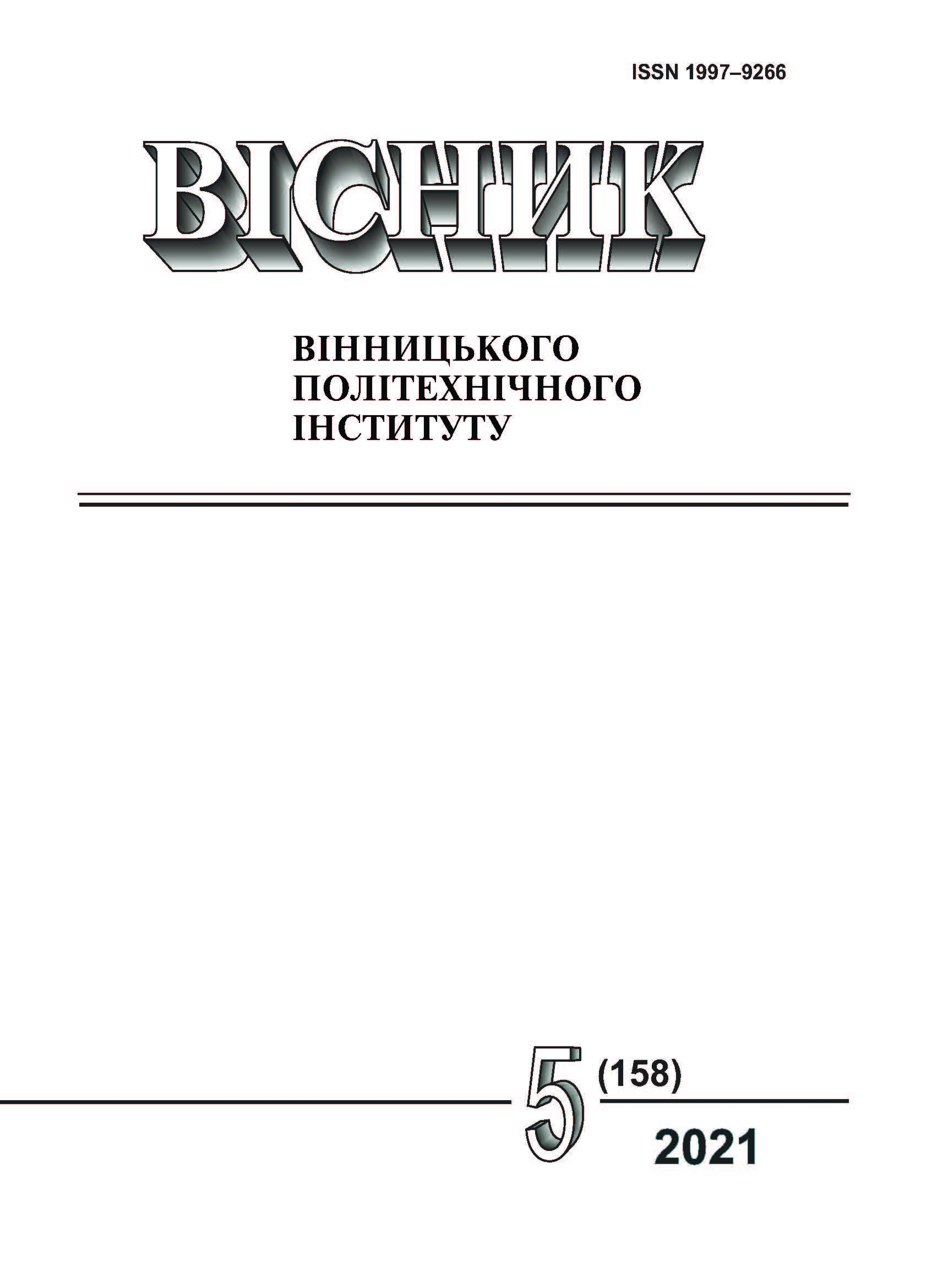Elaboration of Scenarios for Sustainable Development of the Transport System of Ukraine
DOI:
https://doi.org/10.31649/1997-9266-2021-158-5-117-125Keywords:
transport system, sustainable development, export, container transportation, ecological efficiencyAbstract
The article analyzes the dynamics of exports and imports of goods of Ukraine by type of transportation. It is established that one of the key problems of low competitiveness of Ukrainian exporting carriers in international markets is the inconsistency of the fleet and supply chains with modern environmental requirements. Transformation of the transport sector towards climate neutrality opens new perspectives in terms of improving the quality of life and socio-economic development, namely through the modernization and formation of "green" supply chains it is possible to create high quality jobs, develop new environmentally friendly products and services. This will strengthen the competitiveness of the transport system and achieve leadership as we move towards the decarbonisation of other sectors of the economy. The key areas of reducing the negative impact of Ukraine's transport on the environment and ensuring the sustainability of the country's transport industry as a whole should be: development of container traffic, organization of optimal multimodal passenger and freight systems involving "clean" modes of transport, development of necessary transport infrastructure with zero transport, processing and utilization of waste, supply of alternative energy, etc. To form a sustainable transport system of Ukraine, it is necessary to intensify work on the development of container transportation of goods as the most economical, reliable and environmentally friendly mode of transportation. Project scenarios for increasing the level of environmental efficiency of Ukrainian freight transport based on the development of container transportation of export cargo have been developed. As a result of the calculations, it is proved that increasing the level of containerization on various modes of transport provides an opportunity to reduce CO2 emissions and reduce additional costs of the transport sector of Ukraine.
References
Оновлена транспортна стратегія України напрямки політики. [Електронний ресурс]. Режим доступу: https://mtu.gov.ua/files/strategy_ukr.pdf .
Нова транспортна стратегія ЄС: до чого варто бути готовій Україні. [Електронний ресурс]. Режим доступу: https://www.eurointegration.com.ua/experts/2021/03/31/7121474/ .
A. Vashisth, R. Kumar, and S. Sharma, “Major principles of sustainable transport system: a literature review,” International Journal for Research in Applied Science & Engineering Technology, no. 6 (II), pp. 1597-1605, 2018. [Electronic resource]. Available: www.ijraset.com/fileserve.php?FID=13802 .
M. Ogryzek, D. Adamska-Kmieć, and A. Klimach, “Sustainable transport: an efficient transportation network – case study,” Sustainability, 12, Article 8274, 2020. https://doi.org/10.3390/su12198274 .
M. Ogryzek, and A. Wolny-Kucinska, “Sustainable development of transport as a regional policy target for sustainable development – a case study of Poland,” International Journal of Geo-Information, no. 10, Article 132, 2021. https://doi.org/10.3390/ijgi10030132 .
A. J. Craig, E. E. Blanco, and Y. Sheffi, “Estimating the CO2 intensity of intermodal freight transportation,” Transportation Research Part D: Transport and Environment, no. 22, pp. 49-53, 2013. https://doi.org/10.1016/j.trd.2013.02.016 .
M. Noussan, M. Hafner, and S. Tagliapietra, “The Future of Transport Between Digitalization and Decarbonization». Trends, Strategies and Effects on Energy Consumption. Cham, Switzerland: Springer, 2020. https://doi.org/10.1007/978-3-030-37966-7.
L. Soloviova, O. Strelko, and S. Isaienko, “Container transport system as a means of saving resources,” IOP Conf. Series: Earth and Environmental Science, 459 (4). 2020. https://doi.org/10.1088/1755-1315/459/5/052070 .
А. В. Церковна, і В. В. Харламова, «Тенденції контейнерних перевезень в Україні,» Ринкова економіка: сучасна теорія і практика управління, с. 129-143, 2018.
Д. В. Малащук, і Н. А. Гринчак. «Діагностування та прогнозування перспектив розвитку світового ринку контейнерних перевезень,» Науковий вісник Національної академії статистики, обліку та аудиту, № 3, 2018. [Електронний ресурс]. Режим доступу: http://nbuv.gov.ua/UJRN/nvhastat_2018_3_10 .
X. Fang, Z. Ji, Z. Chen, W. Chen, C. Caj, and J. Gan, “Synergy degree evaluation of container multimodal transport system,” Sustainability, 12, Article 1487, 2020. https://doi.org/10.3390/su12041487 .
White Paper. Directions in the Common European Transport Area – Towards a competitive and resource efficient transportation system. EN Brussels, 2011. [Electronic resource]. Available: http://www.dublinport.ie/fileadmin/user_upload /documents/European_Commission-_White_Paper_-_Roadmap_to_a_single_European_Transport_Area.pdf .
Official site of State Statistics Service of Ukraine. [Electronic resource]. Available: http://www.ukrstat.gov.ua/ .
УЗ планирует развивать мультимодальные и контрейлерные перевозки. [Электронный ресурс]. Режим доступа: https://logist.today/dnevnik_logista/2021-03-02/uz-planiruet-razvivat-multimodalnye-i-kontrejlernye-perevozki .
Review of Maritime Transport, 2020. [Electronic resource]. Available: https://unctad.org/system/files/official-document/rmt2020_en.pdf .
EcoTransIT World, Ecological Transport Information Tool for Worldwide: Transports Methodology Report. Short version, 2019. [Electronic resource]. Available: https://www.ecotransit.org/download/EcoTransIT_World_Methodology_Short/Version_2019.pdf .
О. Є.Соколова, і М. Ю. Григорак, «Логістичний підхід до формування «зеленого» авіаційного сектора України,» Економічний простір, № 167, с. 103-110, 2021. https://doi.org/10.32782/2224-6282/167-19 .
Downloads
-
PDF (Українська)
Downloads: 266
Published
How to Cite
Issue
Section
License

This work is licensed under a Creative Commons Attribution 4.0 International License.
Authors who publish with this journal agree to the following terms:
- Authors retain copyright and grant the journal right of first publication.
- Authors are able to enter into separate, additional contractual arrangements for the non-exclusive distribution of the journal's published version of the work (e.g., post it to an institutional repository or publish it in a book), with an acknowledgment of its initial publication in this journal.
- Authors are permitted and encouraged to post their work online (e.g., in institutional repositories or on their website) prior to and during the submission process, as it can lead to productive exchanges, as well as earlier and greater citation of published work (See The Effect of Open Access).





